![理论原子物理学(第3版)(英文版) [Theoretical Atomic Physics(Third Edition)]](https://pic.tinynews.org/10184612/2dd61fec-8ecf-40a7-a0a4-7d95fd52f7e0.jpg)

具体描述
内容简介
《理论原子物理学(第3版)》主要讲解量子力学基本原理在现代原子物理学中的应用。在新版中,作者增添了理论原子物理领域的最新进展,介绍了目前大家非常感兴趣的议题,包括半经典周期轨道理论、外场中原子的标度性质、双电子原子的经典和量子动力学以及原子气体的玻色-爱因斯坦凝聚等。《理论原子物理学(第3版)》还简明介绍了原子光学中若干前沿研究,这是目前和未来超冷原子实验必不可少的知识。作者强调基本理论的解释,使读者能够理解标准理论结构里蕴藏的丰富物理思想,从而可以独立进行科学研究工作。此外,形式各异的习题及其完整的解答过程为《理论原子物理学(第3版)》添色不少。《理论原子物理学(第3版)》被选为德国Springer出版社的“高等物理学教材”,这是一套非常优秀的教材。目次:量子力学概要;原子和离子;原子光谱;简单反应;专题;附录:特殊数学函数;习题答案;索引。原子物理是物理学中最具有活力的前沿领域之一,它在推动人们对自然界的认知方面发挥了重要作用。在过去几年里,该领域及相关领域因原子激光冷却(1997年)、玻色-爱因斯坦凝聚的实现(2001年)以及光的量子相干性与精密光谱学的发展(2005年)三次摘取诺贝尔物理学奖桂冠。读者对象:理论物理、原子分子物理和物理化学等专业的高年级本科生、研究生和相关领域的科研人员。
内页插图
目录
1 Review of Quantum Mechanics1.1 Wave Functions and Equations of Motion
1.1.1 States and Wave Functions
1.1.2 Linear Operators and Observables
1.1.3 The Harniltonian and Equations of Motion
1.2 Symmetries
1.2.1 Constants of Motion and Symmetries
1.2.2 The Radial SchrSdinger Equation
1.2.3 Example: The Radially Symmetric Harmonic Oscillator
1.3 Bound States and Unbound States
1.3.1 Bound States
1.3.2 Unbound States
1.3.3 Examples
1.3.4 Normalization of Unbound States
1.4 Processes Involving Unbound States
1.4.1 Wave Packets
1.4.2 Transmission and Reflection
1.4.3 Time Delays and Space Shifts
1.5 Resonances and Channels
1.5.1 Channels
1.5.2 Feshbach Resonances
1.5.3 Potential Resonances
1.6 Methods of Approximation
1.6.1 Time-independent Perturbation Theory
1.6.2 Ritzs Variational Method
1.6.3 Semiclassical Approximation
1.6.4 Inverse Power-Law Potentials
1.7 Angular Momentum and Spin
1.7.1 Addition of Angular Momenta
1.7.2 Spin
1.7.3 Spin-Orbit Coupling
Problems
References
2 Atoms and Ions
2.1 One-Electron Systems
2.1.1 The Hydrogen Atom
2.1.2 Hydrogenic Ions
2.1.3 The Dirac Equation
2.1.4 Relativistic Corrections to the Schrodinger Equation
2.2 Many-Electron Systems
2.2.1 The Hamiltonian
2.2.2 Pauli Principle and Slater Determinants
2.2.3 The Shell Structure of Atoms
2.2.4 Classification of Atomic Levels
2.3 The N-Electron Problem
2.3.1 The Hartree-Fock Method
2.3.2 Correlations and Configuration Interaction
2.3.3 The Thomas-Fermi Model
2.3.4 Density Functional Methods
2.4 Electromagnetic Transitions
2.4.1 Transitions in General, "Golden Rule"
2.4.2 The Electromagnetic Field
2.4.3 Interaction Between Atom and Field
2.4.4 Emission and Absorption of Photons
2.4.5 Selection Rules
2.4.6 Oscillator Strengths, Sum Rules
Problems
References
3 Atomic Spectra
3.1 Long-Ranged and Shorter-Ranged Potentials
3.1.1 Very-Long-Ranged Potentials
3.1.2 Shorter-Ranged Potentials
3.1.3 The Transition From a Finite Number to Infinitely Many Bound States, Inverse-Square Tails
3.1.4 Example: Truncated Dipole Series in the H- Ion
3.2 One Electron in a Modified Coulomb Potential
3.2.1 Rydberg Series, Quantum Defects
3.2.2 Seatons Theorem, One-Channel Quantum Defect. Theory
3.2.3 Photoabsorption und Photoionization
3.3 Coupled Channels
3.3.1 Close-Coupling Equations
3.3.2 Autoionizing Resonances
3.3.3 Configuration Interaction, Interference of Resonances
3.3.4 Perturbed Rydberg Series
3.4 Multichannel Quantum Defect Theory (MQDT)
3.4.1 Two Coupled Coulomb Channels
3.4.2 The Lu-Fano Plot
3.4.3 More Than Two Channels
3.5 Atoms in External Fields
3.5.1 Atoms in a Static, Homogeneous Electric Field
3.5.2 Atoms in a Static, Homogeneous Magnetic Field
3.5.3 Atoms in an Oscillating Electric Field
Problems
References
4 Simple Reactions
4.1 Elastic Scattering
4.1.1 Elastic Scattering by a Shorter-Ranged Potential
411.2 Mean Scattering Lengths
4.1.3 Near-Threshold Feshbach Resonances
4.1.4 Semiclassical Description of Elastic Scattering
4.1.5 Elastic Scattering by a Pure Coulomb Potential
4.1.6 Elastic Scattering by a Modified Coulomb Potential, DWBA
4.1.7 Feshbach Projection. Optical Potential
4.2 Spin and Polarization
4.2.1 Consequences of Spin-Orbit Coupling
4.2.2 Application to General Pure Spin States
4.2.3 Application to Mixed Spin States
4.3 Inelastic Scattering
4.3.1 General Formulation
4.3.2 Coupled Radial Equations
4.3.3 Threshold Effects
4.3.4 An Example
4.4 Exit Channels with Two Unbound Electrons
4.4.1 General Formulation
4.4.2 Application to Electrons
4.4.3 Example
4.4.4 Threshold Behaviour of Ionization Cross Sections
Problems
References
5 Special Topics
5.1 Multiphoton Absorption
5.1.1 Experimental Observations on Multiphoton Ionization
5.1.2 Calculating Ionization Probabilities via Volkov States
5.1.3 Calculating Ionization Probabilities via Floquet States
5.2 Classical Trajectories and Wave Packets
5.2.1 Phase Space Densities
5.2.2 Coherent States
5.2.3 Coherent Wave Packets in Real Systems
5.3 Regular and Chaotic Dynamics in Atoms
5.3.1 Chaos in Classical Mechanics
5.3.2 Traces of Chaos in Quantum Mechanics
5.3.3 Semiclassical Periodic Orbit Theory
5.3.4 Scaling Properties for Atoms in External Fields
5.3.5 Examples
5.4 Bose-Einstein Condensation in Atomic Gases
5.4.1 Quantum Statistics of Fermions and Bosons
5.4.2 The Effect of Interactions in Bose-Einstein Condensates
5.4.3 Realization of Bose-Einstein Condensation in Atomic Gases
5.5 Some Aspects of Atom Optics
5.5.1 Atom-Wall Interactions
5.5.2 Evanescent-Wave Mirrors
5.5.3 Quantum Reflection
Problems
References
A Special Mathematical Functions
A.1 Legendre Polynomials, Spherical Harmonics
A.2 Laguerre Polynomials
A.3 Gamma Function
A.4 Bessel Functions
A.5 Whittaker Functions, Coulomb Functions
References
Solutions to the Problems
References
Index
前言/序言
The one and a half decades since the publication of the first edition of Theo-retical Atomic Physics have seen a continuation of remarkable and dramatic experimental breakthroughs. With the help of ultrashort laser pulses, special states of atoms and molecules can now be prepared and their time-evolution studied on time scales shorter than femtoseconds. Trapped atoms and mole-cules can be cooled to temperatures on the order of a few nano-Kelvin and light fields can be used to guide and manipulate atoms, for example in optical lattices formed as standing waves by counterpropagating laser beams. After the first production of Bose-Einstein condensates of ultracold atomic gases in 1995, degenerate quantum gases of ultracold atoms and molecules are now prepared and studied routinely in many laboratories around the world. Such progress in atomic physics has been well received and appreciated in the gen-eral academic community and was rewarded with two recent Nobel Prizes for physics. The 1997 prize was given to Steven Chu, Claude Cohen-Tannoudji and William Phillips for their work on cooling atoms, and only four years later Eric Cornell, Wolfgang Ketterle and Carl Wieman received the 2001 prize for the realization of the Bose-Einstein condensates mentioned above.The prominence of modern experimental atomic physics establishes fur-ther need for a deeper understanding of the underlying theory. The continuing growth in quality and quantity of available computer power has substantially increased the effectivity of large-scale numerical studies in all fields, including atomic physics. This makes it possible to obtain some standard results such as the properties of low-lying states in many-electron atoms with good accuracy using generally applicable programme packages. However, largely due to the dominant influence of long-ranged Coulomb forces, atomic systems are rather special. They can reveal a wide range of interesting phenomena in very differ-ent regimes——from near-classical states of highly excited atoms, where effects of nonlinearity and chaos are important, to the extreme quantum regime of ultracold atoms, where counterintuitive nonclassical effects can be observed. The theoretical solution of typical problems in modern atomic physics requires proficiency in the practical application of quantum mechanics at an advanced level, and a good understanding of the links to classical mechanics is almost always helpful. The aim of Theoretical Atomic Physics remains to provide the reader with a solid foundation of this sort of advanced quantum mechanics.
In preparing the third edition I have again tried to do justice to the rapid development of the field. I have included references to important new work whenever this seemed appropriate and easy to do. Chapter I now includes a section on processes involving (wave packets of) continuum states and also an expanded treatment of the semiclassical approximation. Chapter 3 begins with a section illuminating the characteristic differences in the near-threshold properties of long-ranged and shorter-ranged potentials, and the first section of Chap. 4 contains a more elaborate discussion of scattering lengths. As a further "special topic" in Chap. 5 there is a section describing some aspects of atom optics, including discusions of the interactions of atoms with material surfaces and with light fields. The appendix on special mathematical functions has been slightly expanded to accommodate a few results that I repeatedly found to be useful.
用户评价
作为一名对物理学抱有浓厚兴趣的普通读者,我抱着学习和探索的心态翻开了《理论原子物理学(第3版)》。起初,我担心这本书过于专业化,可能会让我望而却步,但事实证明我的担忧是多余的。这本书的结构设计非常合理,从最基础的量子力学概念讲起,逐步深入到原子结构的复杂理论。作者在介绍每一个新概念时,都力求做到清晰明了,避免使用过多晦涩难懂的术语,或者在必要时给予详尽的解释。我特别喜欢书中关于原子结构演化历史的回顾,这让我了解到科学家们是如何一步步突破认知局限,最终建立起我们现在所熟知的原子模型。书中对薛定谔方程的讲解,虽然涉及数学推导,但作者用生动的语言和形象的比喻,将抽象的波函数概念具象化,让我能更好地理解电子在原子中的概率分布。此外,书中对于自旋、角动量守恒等概念的阐述,也让我对原子的内在属性有了更深刻的认识。我常常在阅读的过程中,联想到一些日常生活中可见的现象,并尝试用书中的理论去解释,这过程充满乐趣。这本书不仅仅是一本教科书,更像是一位经验丰富的导师,引导我一步步走进理论原子物理学的奇妙世界。它让我意识到,即使是看似微不足道的原子,其内部的运作机制也蕴含着无穷的奥秘和精妙的规律。作者的写作风格亲切而富有启发性,仿佛在和我进行一场平等的学术对话,让我不再感到距离感。对于任何想要深入了解原子世界的读者来说,这本书绝对是不可多得的佳作,它能点燃你的好奇心,满足你的求知欲,并为你打开一扇通往更广阔科学领域的大门。
评分这本书的语言风格非常独特,作者似乎有一种将最复杂抽象的概念变得生动有趣的魔力。我曾经尝试阅读过一些理论物理学的书籍,但往往因为过于枯燥的数学推导和晦涩的术语而难以坚持。然而,《理论原子物理学(第3版)》却让我体验到了前所未有的阅读乐趣。作者在讲解每一个理论的时候,都会穿插一些历史故事、思想实验,甚至是一些巧妙的类比,让我能够快速地抓住核心思想。比如,在介绍量子叠加态时,作者并没有直接抛出数学公式,而是通过一个非常生动的“薛定谔的猫”的例子,让我瞬间理解了这种奇特现象。他对玻尔模型、量子力学发展历程的梳理,不仅仅是罗列事实,更像是讲述了一群伟大的科学家如何一步步探索真理的史诗。我尤其喜欢书中对于各种近似方法的讨论,作者会详细解释每种方法的适用条件和局限性,并给出具体的例子,让我能够真正理解这些工具的威力。即使是一些我不太熟悉的数学概念,作者也会通过图形化或者直观的解释来帮助我理解。这本书让我觉得,学习理论物理学不再是枯燥的死记硬背,而是一场充满智慧和想象力的探索之旅。它点燃了我对科学的兴趣,并让我愿意花更多的时间去深入了解这个迷人的世界。这本书无疑是我近年来读过的最令人印象深刻的科学著作之一,它不仅传授了知识,更重要的是,它传递了一种科学精神和探索的乐趣。
评分作为一名在量子计算领域工作的工程师,我经常需要深入理解量子力学的基本原理,而原子物理学正是这些原理的重要载体。《理论原子物理学(第3版)》为我提供了关于量子态、量子叠加、量子纠缠等概念的坚实理论基础。书中关于多粒子系统的量子力学描述,特别是对量子关联的讨论,对于理解和设计量子计算机至关重要。我发现,书中对原子能级、跃迁过程的详细分析,为我们操控量子比特提供了理论依据。例如,如何利用激光精确地控制原子的能级跃迁,从而实现量子信息的编码和操作,这些都在书中得到了深入的阐述。作者在讲解原子谱线时,也触及了与量子信息处理相关的概念,例如量子比特的编码可以通过原子的特定能级来实现。书中对量子测量理论的讨论,也为理解量子计算中的测量过程提供了理论支持。我尤其关注书中关于退相干的讨论,这是在量子计算中面临的一个巨大挑战,而理解其物理根源,有助于我们开发更有效的纠错机制。这本书的严谨性和前沿性,让我能够更好地把握量子计算技术的发展方向,并解决实际工程中的难题。对于任何希望在量子信息科学领域有所建树的人来说,这本书都将是一本极具价值的参考书,它能够帮助你建立起扎实的理论功底,并为你的创新研究提供不竭的灵感。
评分我是一位对前沿科学技术充满热情的科技爱好者,我喜欢了解那些支撑现代科技发展的底层理论。《理论原子物理学(第3版)》正是一本能够满足我这种需求的著作。这本书以一种极其专业的方式,为我揭示了原子世界的奥秘,而这些奥秘正是现代科技,如激光、半导体、核能等,得以实现的基础。我惊叹于作者能够如此精确地描述原子内部的各种相互作用,以及这些相互作用如何决定了原子的性质和行为。书中关于量子力学与相对论结合的讨论,让我对宇宙的运行法则有了更深刻的认识。虽然我无法完全理解其中的所有数学细节,但作者通过对各种近似方法的介绍,让我能够窥探到科学家们是如何一步步解决复杂问题的。我特别欣赏书中关于原子在强场中的行为的描述,这与激光技术的发展密切相关。理解原子与光场的相互作用,对于开发更高效、更先进的光学器件至关重要。这本书也让我认识到,理论物理学并非是脱离实际的象牙塔,而是与我们的日常生活息息相关。它为我们理解材料的性质、设计新的功能器件提供了理论指导。阅读这本书,我不仅获得了科学知识,更重要的是,我感受到了人类智慧的伟大和探索未知的不懈追求。这本书对于任何想要了解现代科技背后深层原理的人来说,都是一本不可多得的读物,它会让你对我们所处的世界产生全新的认识。
评分作为一名从事化学研究的学者,虽然我的主要领域不是原子物理学,但我深知原子结构的理解对于化学反应机理的阐释至关重要。因此,我选择阅读《理论原子物理学(第3版)》来深化我的知识储备。《理论原子物理学(第3版)》以其全面性和系统性,为我提供了一个坚实的理论基础。书中关于原子核结构、电子排布以及原子相互作用的阐述,都与化学中的原子成键、分子结构等概念息息相关。我尤其关注书中关于原子光谱的部分,因为光谱分析是化学中常用的表征手段,而理解光谱的产生机制,能够帮助我更深入地解释实验现象。作者对于原子轨道杂化、分子轨道理论的引入,虽然是更进一步的范畴,但其根源都建立在对原子物理学的深刻理解之上,这本书为我打下了良好的基础。此外,书中对于原子在外部场中的行为的讨论,也对理解某些化学现象,例如光化学反应、催化过程等,具有重要的启发意义。作者在数学推导方面做得十分到位,每一步都清晰可见,这使得我能够追踪作者的思路,并理解理论的由来。即使有些数学公式我无法立即完全掌握,但其背后的物理意义通过作者的解释,我能够有所领悟。这本书的出版,无疑为跨学科的研究提供了宝贵的资源,它能够帮助不同领域的学者更好地理解原子层面的物理规律,从而在各自的研究中获得新的突破。
评分这本书简直是我近期阅读过的最令人振奋的学术著作之一,即使我不是一名专业的理论原子物理学家,也深深地被其严谨的逻辑、深刻的洞察力以及对复杂概念的清晰阐释所吸引。从拿到这本书开始,我便被它坚实的封面和清晰的排版所吸引,这预示着内容本身的卓越。初翻开,虽然是一些公式和抽象的概念,但作者通过循序渐进的方式,将看似遥不可及的理论物理学一步步展现在我面前。我尤其欣赏的是书中对基本概念的重塑和深化,许多我过去囫囵吞枣理解的内容,在这本书中得到了更精炼、更透彻的解释。例如,对于原子光谱的解释,不仅仅是简单地罗列能量级,而是深入探讨了量子化、跃迁的概率以及不同相互作用对光谱的影响,这让我对原子的内在运作机制有了全新的认识。书中对于微扰理论的讲解更是深入浅出,即使我不是直接应用这些公式的研究者,也能体会到它在解决实际问题中的强大力量。作者巧妙地运用类比和直观的图示,将抽象的数学模型与物理实在联系起来,使得学习过程不至于枯燥乏味。我甚至可以想象,对于那些正在攻读相关专业的学生而言,这本书无疑是他们学术旅程中最宝贵的财富。它不仅提供了知识,更培养了严谨的科学思维和解决问题的能力。阅读过程中,我常常会因为某个精彩的论证而停下来,反复揣摩作者的思路,并尝试将书中讲到的概念应用到一些设想的场景中,这极大地激发了我探索未知领域的兴趣。这本书的出版,无疑是对理论原子物理学领域的一次重要贡献,其深远的学术价值和广泛的适用性,将会在很长一段时间内持续影响着相关领域的研究和教育。
评分我是一个对科学充满好奇心的业余爱好者,平时喜欢阅读一些科普读物。偶然的机会,我接触到了《理论原子物理学(第3版)》。尽管我没有专业的物理学背景,但这本书以其引人入胜的叙述方式,让我沉浸在了原子世界的奇妙旅程中。作者并没有回避复杂的科学概念,而是用一种化繁为简的方式,将它们呈现出来。我被书中描绘的原子内部的“舞蹈”所吸引——电子围绕原子核的运动,能量的跃迁,以及原子与光之间的相互作用。作者通过生动的比喻和形象的语言,让我能够理解那些抽象的数学公式所代表的物理意义。例如,在解释原子轨道时,作者将其比作电子在原子核周围“云状”的活动范围,而不是简单的行星绕日模型,这让我对电子的概率分布有了更直观的认识。书中对原子光谱的讲解,让我明白了为什么每种元素都有其独特的光谱“指纹”,以及光谱是如何揭示原子内部结构的奥秘的。即使是一些我不太理解的公式,我也能通过作者的解释,感受到其背后的逻辑和力量。这本书让我对物理学有了更深的敬畏之心,也让我意识到,即便是我们肉眼看不见的微观世界,也充满了令人惊叹的规律和秩序。对于像我一样的普通读者来说,这本书提供了一个绝佳的机会,去领略理论原子物理学的魅力,它既有深度又不失趣味性,绝对是一本值得推荐的好书。
评分这本书的第三版,果然名不虚传。作为一名长期关注理论原子物理学领域发展的研究者,我对于这类经典著作的要求向来很高。而《理论原子物理学(第3版)》完全超出了我的预期。首先,从内容更新的角度来看,作者在原有扎实基础上,积极吸收了近年来该领域的最新研究成果和理论突破,使得本书始终保持着前沿性。我尤其对书中关于多体理论的讨论印象深刻,作者对近似方法的精细化处理和对精细结构效应的深入分析,为我今后的研究提供了宝贵的参考。其次,在讲解方式上,作者并没有因为内容的深化而牺牲清晰度。他巧妙地将复杂的数学推导与直观的物理图像相结合,使得即使是相对初级的读者也能领略其精髓。例如,在讲解原子在电磁场中的行为时,作者不仅给出了详细的能量级计算,还生动地描绘了跃迁跃升和辐射衰减的过程,极具画面感。书中对不同相互作用(如自旋-轨道耦合、电子-电子排斥)的处理,也体现了作者深厚的功底和对细节的关注。他能够准确地把握各种近似方法的适用范围和局限性,并对其进行恰当的权衡。我甚至发现,书中一些新的例子和习题,都极具启发性,能够引导读者从新的角度思考问题。总的来说,这本书不仅是理论原子物理学领域的一本权威教材,更是一部集学术性、前沿性和实用性于一体的杰作。对于任何希望深入了解原子物理学理论的研究者、研究生和高年级本科生来说,这本书都将是他们案头必备的参考书,其价值将随着时间的推移而愈发凸显。
评分我是一名对宇宙学和天体物理学怀有深厚兴趣的爱好者,我总觉得理解原子层面的物理规律,是窥探宏观宇宙运作机制的关键。《理论原子物理学(第3版)》以其独特的视角,为我揭示了原子在宇宙中的扮演的角色。书中关于恒星核合成的讨论,让我了解到原子是如何在宇宙大爆炸的早期以及恒星的内部形成的,这是构成宇宙万物的基础。我对书中关于原子在极端环境下的行为的描述尤为感兴趣,例如在强磁场、高温高压下的原子特性,这些都与中子星、白矮星等致密天体的物理过程息息相关。作者对原子光谱的深入分析,也让我明白了天文学家是如何通过分析星体发出的光,来推断其化学成分、温度以及运动状态的。每一种元素的独特光谱,都是宇宙物质组成的重要信息载体。书中关于原子辐射和吸收的理论,也为理解星际物质的形成和演化提供了理论支持。我甚至发现,书中对原子相互作用的讨论,能够帮助我理解为什么某些元素在宇宙中的丰度会有所不同。阅读这本书,让我对宇宙的起源和演化有了更深刻的理解,也让我意识到了微观物理学在理解宏观宇宙中的重要性。这本书为我的天文学探索之旅提供了坚实的理论基石,让我能够以更专业、更深入的视角去观察和思考宇宙。
评分我是一名在校的物理学研究生,目前正在攻读理论物理方向。在导师的推荐下,我开始阅读《理论原子物理学(第3版)》。坦白说,我之前对原子物理学的一些概念理解得比较零散,这本书就像一把钥匙,为我打开了通往系统性知识的大门。从第一章开始,我就被作者的严谨逻辑和深刻见解所折服。书中对量子力学基本原理的回顾,虽然我之前学过,但通过作者的重新梳理,我发现了许多之前忽略的细节和更深层次的理解。特别是关于原子哈密顿量的构建,作者详细地分析了各种相互作用的贡献,以及如何通过近似方法来求解,这对我后续研究中构建模型提供了极大的帮助。书中关于电子结构和光谱的章节,内容非常翔实,不仅解释了光谱线的来源,还深入探讨了精细结构、超精细结构等现象,这些都是我研究中非常重要的部分。作者对于多电子原子体系的处理,采用了多种近似方法,并对它们的优缺点进行了详细的比较,这让我能够根据具体问题选择最合适的计算方法。我尤其欣赏书中对相对论效应的处理,这在一些精确计算中是必不可少的,作者的讲解清晰易懂,让我能够快速掌握相关概念。这本书中的例题和习题都非常有代表性,能够有效地检验我对理论的掌握程度,并且其中一些题目非常有挑战性,能够激发我的思考。毫无疑问,这本书已经成为我研究生学习过程中不可或缺的参考资料,它不仅提升了我的理论知识,更重要的是培养了我独立解决问题的能力。
评分适合学完了基本的原子物理和量子力学的本科生来看,内容更深入,俺买来是想作为一个知识补充,德国人的英语书写比美国人别扭一些,内容不错。
评分好书,经典!!!!!!!!!
评分很好的东西,很喜欢的哈~
评分这本书写的好!用的挺棒哒!
评分一本好书 需要慢慢琢磨
评分送货非常迅速,喜欢京东购物!
评分京东双十一优惠力度不错,专程从某逊和某当过来。
评分好
评分适合学完了基本的原子物理和量子力学的本科生来看,内容更深入,俺买来是想作为一个知识补充,德国人的英语书写比美国人别扭一些,内容不错。
相关图书
本站所有内容均为互联网搜索引擎提供的公开搜索信息,本站不存储任何数据与内容,任何内容与数据均与本站无关,如有需要请联系相关搜索引擎包括但不限于百度,google,bing,sogou 等
© 2025 book.tinynews.org All Rights Reserved. 静思书屋 版权所有

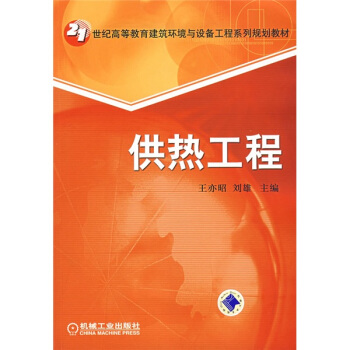

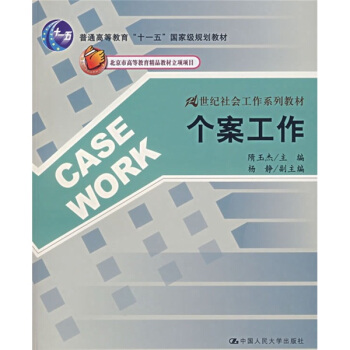
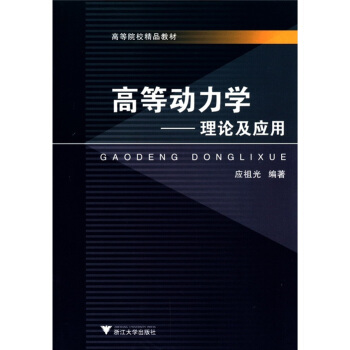
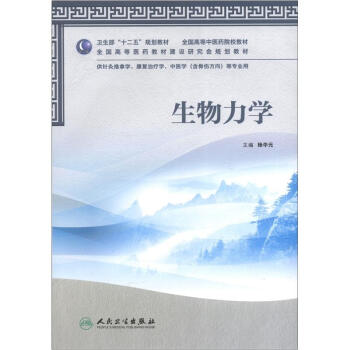
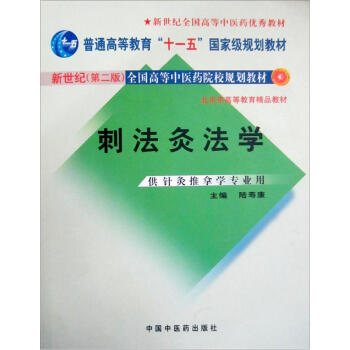
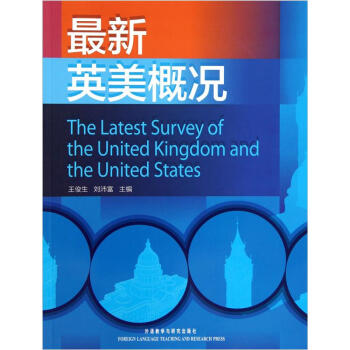

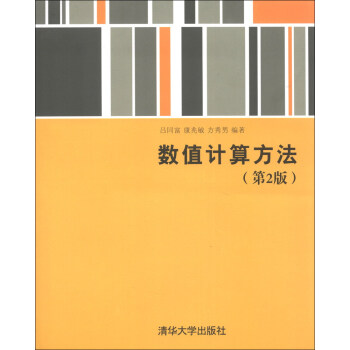
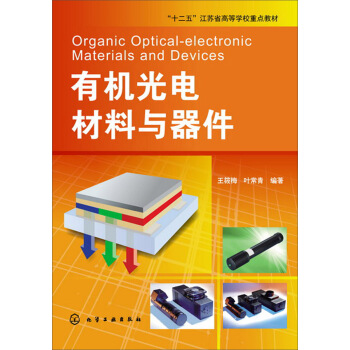
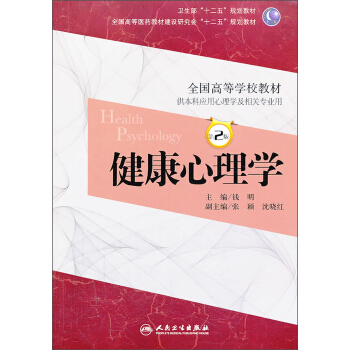
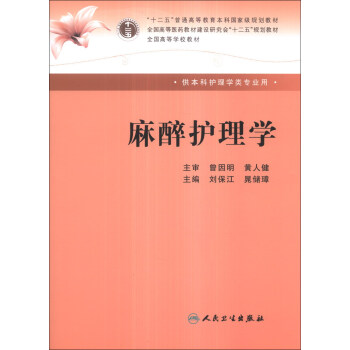
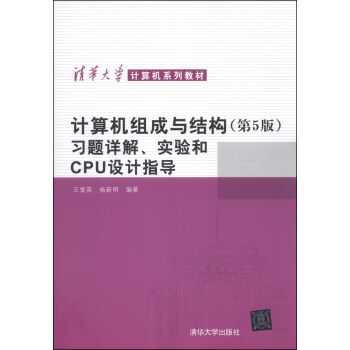
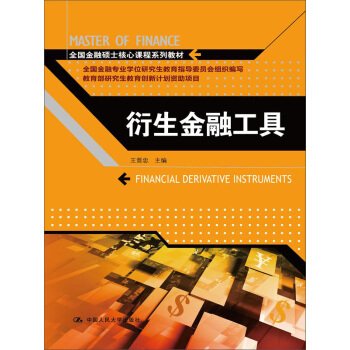

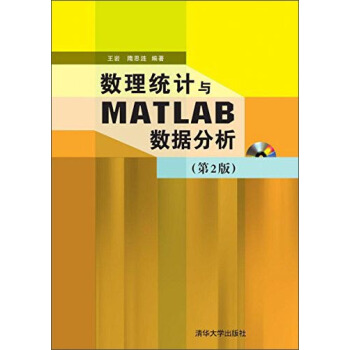

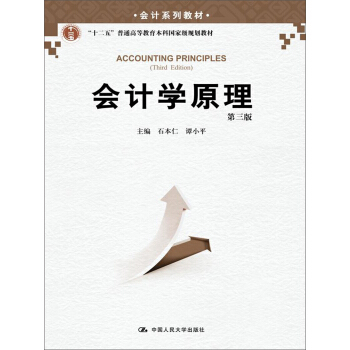
![材料科学研究与工程技术系列:复合材料概论 [Introduction of Composite Materials] pdf epub mobi 电子书 下载](https://pic.tinynews.org/11649862/54f3c605N0617b614.jpg)
